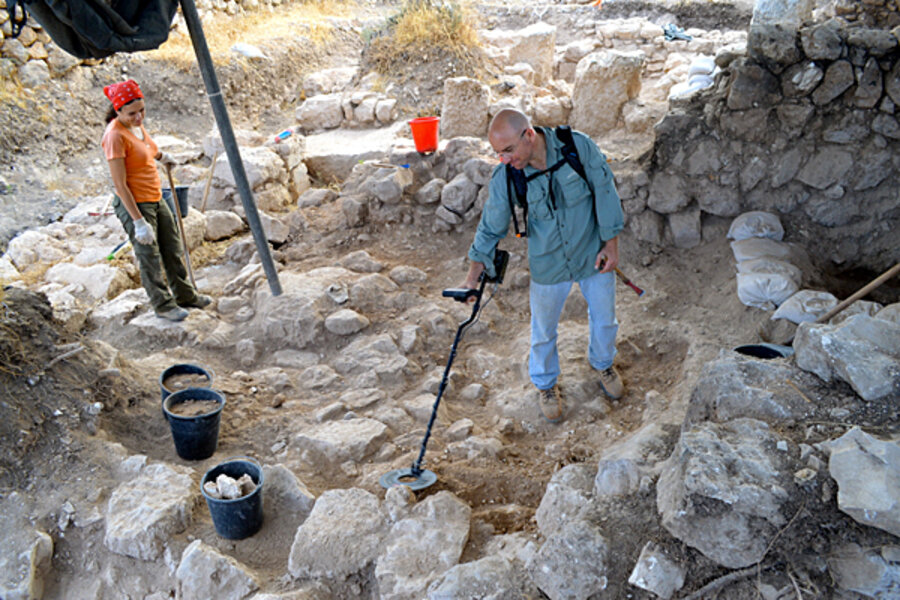Coining the Holy Land's history
Loading...
| Khirbet Qeiyafa, Israel
This summer, Yoav Farhi has been on the money.
Armed with a pick axe, metal detector, and wide-brimmed hat, he’s found more than 60 ancient coins at this archaeological site overlooking Israel’s Valley of Elah, where the Bible records the battle of David and Goliath taking place some 3,000 years ago. Among them are weighty coins from the time of Alexander the Great, imprinted with the face of the Greek goddess Athena.
Even with the help of a metal detector, it can be tedious work looking for tiny bits of metal amid the wheelbarrow loads of dirt unearthed by excavators, or in the excavations themselves.
But for Farhi, it’s the fulfillment of a childhood passion, rooted in a land criss-crossed by Canaanites, Philistines, Israelites, Persians, Greeks, Romans, Byzantines, Muslims, Crusaders, and Ottomans long before he was born.
“I was a very curious kid, reading encyclopedias … collecting coins and stamps,” he says over a tahini-and-date-syrup breakfast sandwich, the Middle Eastern equivalent of PB&J. “All my way to school was over potsherds.”
So in sixth grade, he participated in his first excavation, at Tel Qasile in Tel Aviv. That led to graduate work in archaeology at Hebrew University in Jerusalem, with a PhD dissertation on the coinage of Gaza in the Roman period.
While Israeli citizens haven’t been allowed into Gaza since Israel withdrew from the Palestinian territory in 2005, he has sought to piece together a picture of Roman times based on coins that were found there and are kept today in public and private collections around the world.
Gaza may have been the first city in the area to mint coins as early as the 5th century B.C. and became perhaps the most important Roman city in southern Palestine, he says, due in part to its role as a port for spices brought from the Arabian peninsula or beyond.
But despite the clues that have endured until today, such as coins, it’s still a challenge to piece together such ancient history.
“To be an archaeologist, you have to have a good imagination, that’s for sure,” says Farhi.








